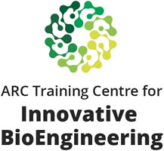
PROFESSOR
QING LI
BE ME Hunan ME UTS PhD Sydney 2000
Professor and ARC Future Fellow
School of Aerospace, Mechanical and Mechatronic Engineering
Professor Qing Li obtained his PhD degree from the University of Sydney in 2000. He received his postdoc training from Cornell University, NY, USA 2000 – 2001. He was a recipient of an Australian Research Council (ARC) Australian Postdoctoral (APD) Research Fellowship in 2001 (55 awarded nationwide). Dr Qing Li was a senior lecturer in School of Engineering, James Cook University, Townsville, Australia from 2004 to 2006. He returned to Sydney by taking up a Sesqui senior lectureship in 2006, where he was promoted to Associate Professor in 2010 and Professor in 2014. Dr Qing Li was a recipient of an Australian Academy of Science (AAS) international award to visit the University of Michigan, Ann Arbor, USA in 2006. Professor Qing Li was an ARC Future Fellow (2013-2017) in the School of Aerospace, Mechanical and Mechatronic Engineering, at the University of Sydney.
Research Highlight 1
Computational bone remodeling for dental implantation.
Professor Qing Li and his colleagues pioneered dental implant driven bone remodelling studies, in which they for the first time developed computational remodelling algorithms by correlating with clinical follow-up data. They proposed to use CT and/or X-ray data at different time points to tweak remodelling parameters for patient specific assessment of long-term clinical outcomes.
Their computational remodeling study allow them to collaborate with prosthodontists by applying to different clinical cases such as implant-supported crown, multi-implant-support fixed partial denture, multi-implant-support over-denture. Their studies have drawn increasing attention worldwide through numerous invitations to give lectures in different areas.
Research Highlight 2
Computational modelling for biomaterials fracture.
Professor Qing Li and his colleagues tackled the quantification of damage and fracture in load-bearing prostheses, by creating a new constitutive model that encompassed micro-damage and stress fracture automatically, where prescription of failure zone is no longer required. Their further studies on this issue enabled them for the first time to expand the eXtended Finite Element Method (XFEM) to the design analysis of multilayer bioceramic structures such as dental prostheses, tissue scaffold and hip replacement devices.
RESULT
This work led to exciting finding including determination of contact cone and fracture paths in layered ceramics. The methodological breakthrough allowed them to collaborate with leading international and domestic companies for three linkage projects.
.
Research Highlight 3
Optimisation for scaffold tissue engineering.
Professor Qing Li and his team developed topology optimisation methods for design of different tissue scaffolds in which they proposed the computational algorithms for modelling the biodegradation of various scaffold materials and tissue ingrowth under biomechanical stimulation, which allows assessing not only the immediate mechanobiological microenvironment, but also the long-term outcome of scaffolding for generating neotissue.
RESULT
Their new framework established allowed the team to collaborate with tissue engineers and scientists by developing more effective in-vitro and/or in-vivo experimental protocols, which help accelerate the translation to clinic.
Research Highlight 4
Computational bioelectrical modelling.
Professor Qing Li and his collaborator developed the first sophisticated 3D human brain model for simulating electrical current flow induced by cochlear implant. It is extremely challenge (if not impossible) to measure in-vivo current distribution in a patient’s head under different conditions. Computational modelling becomes a unique alternative. Their development of image based 3D human head model enabled them to understand how the current is distributed and how the energy is consumed.
RESULT
This breakthrough made a significant contribution to their linkage partner, Cochlear, in helping gain insightful understanding of how the implantable prosthesis could work more efficiently. This sophisticated computational model also enables to be used in other areas, such as deep brain stimulation and brain injury.
Research Highlight 5
Computational design for enhancing vehicle safety
Professor Qing Li and his international collaborators developed, for the first time, a multiobjective optimization framework for design of a full-scale passenger car with dummy occupants by considering both injury biomechanics criteria and structural safety criteria. Their further studies on vehicle safety enable them to develop a range of lightweight structures for enhancing vehicular crashworthiness.
RESULT
Their works have drawn extensive attention in the research community and industry companies through growing citations and invitations to deliver talks in industry and key conferences.

